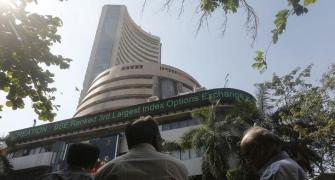With domestic savings rising, there is strong case that they may; but, equally, it may be premature to underestimate the potency of foreign flows.
Milind Barve, MD, HDFC Asset Management Company
With domestic flows increasing, it's a matter of time before they become comparable to and ultimately overtake foreign flows
While so far FII inflows have overshadowed domestic inflows into the equity markets, there are indications that the situation may change over the next few years. On the one hand, the insurance sector, particularly the private sector, is beginning to play a much larger role. With most of the money flowing into ULIPs, a large portion of new premiums are finding their way into the market.
On the other hand, mutual funds are also likely to play a much more important role. Growth drivers for the mutual fund industry include:
- Improved awareness as a result of the entry of new players and concerted investor education programmes by incumbents.
- Rising penetration: After initially targeting metros, established fund houses are now aggressively expanding distribution into the hinterland.
- Product innovation: While plain vanilla launches will continue, we are seeing greater product innovation as fund houses aim to differentiate themselves and as investor receptiveness improves following rising awareness.
- New growth drivers in the form of PMS and structured products should increase flows into mutual funds as well.
- The continued secular bull run in the equity market is not only encouraging existing investors to increase investment, but is also attracting new and hitherto reticent investors.
- High interest rates: High interest rates had diverted funds into banks deposits (PLR has fallen from 16.5 per cent in Dec '96 to 12.75 per cent in Dec '07). With interest rates easing, greater flows into mutual funds can be expected over time.
- New regulations that aim to increase investor protection (such as disclosure norms) will improve the attractiveness of mutual funds.
Whereas, the assets under management of MFs, including equity assets, have exhibited rapid growth over the last few years, yet the numbers are significantly below potential, given the large pool of local savings.
Historically, Indian households have saved a relatively small portion of savings in equities due to high interest rates, low awareness and weak distribution of equity products. This should change over the medium to long term as has happened in developed markets and driven by factors mentioned above.
Over the next five years, even if 5 per cent of incremental savings start to flow into equities, it would amount to an annual flow of nearly $40-50 billion, which should be either higher or at least comparable to the foreign flows, assuming they grow as well.
To conclude, as the size of the domestic economy expands and as more domestic savings find their way to equities, domestic institutions should play a more important role in the Indian capital markets. From a small beginning, domestic flows have already risen considerably to become more meaningful when compared to global inflows. Domestic savings are likely to continue to grow at an accelerated pace led by the development of both insurance and mutual fund industries, and it is only a matter of time before local inflows become comparable to and ultimately overtake foreign flows.
Amay Hattangadi, executive director, Morgan Stanley Investment Management
The degree of influence of foreign investors as 'price setters' in an increasingly global marketplace won't fade any time soon
Episodes of high volatility in international capital flows to emerging markets in the 1990s put foreign investors in the limelight. They were often viewed as culprits behind bouts of market instability and the ensuing currency crisis.
Since then the perception of foreign investors has undergone a positive change. The MSCI Emerging Markets index is up 5.7 times from its low in September 2001, driven largely by foreign flows.
India has behaved like a typical emerging market during this period. It has, if anything, experienced a disproportionately larger share of foreign investor flows in the last four years. From the early 1990s, when foreign investors were first allowed to invest in the Indian markets, their influence on the Indian stock markets has only been growing.
The year 2007 saw record net foreign inflows of $17.3 billion and foreign investors now hold $250 billion worth of stock in the Indian market.
If you study monthly market returns in 2007, there is only one month when the direction of net foreign investor flow (inflow or outflow) and the direction of the Sensex (up or down) are not synchronous. Over a three-year period, that number is five out of 36 months. In every other month, the direction of net foreign inflows has guided market direction.
In the past, markets have gone into an instant downward tailspin whenever the government has taken any measure that would likely slow down or reverse foreign flows, whether it was the Mauritius-based foreign investors controversy in 2000 or the more recent participatory notes episode.
Foreign investors have been "price setters" given their ability to move large amounts of money in markets across the world. It is now widely recognised that Indian markets are correlated to global markets and linked to global events. Foreign investors are considered more "sophisticated" in their interpretation of the impact of global events on the Indian markets, and hence, the direction of their trades are keenly tracked.
There is no doubt that mutual funds and insurance companies in India will see their assets grow in the coming years. The sharp rise in new demat accounts opened indicates that individuals too want to participate in the capital markets.
However, it is still early days to call for the "decoupling" argument, that is, can market direction run contrary to foreign investor flows? The magnitude of foreign flows as a proportion to local institutional and retail flows may rise or fall in the coming years. This will depend on the increase in the number of local participants and how far India's household savings get channelled into equity markets.
Having said that, it is hard to imagine that the degree of influence of foreign investors as "price setters" in an increasingly global marketplace will fade any time soon.








